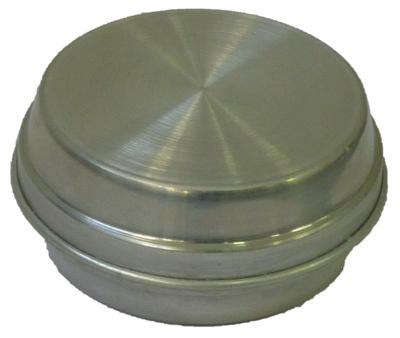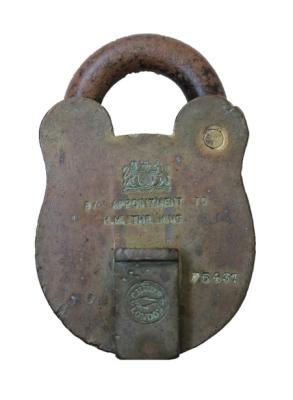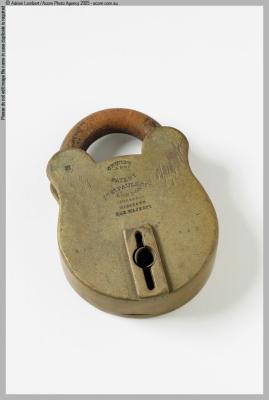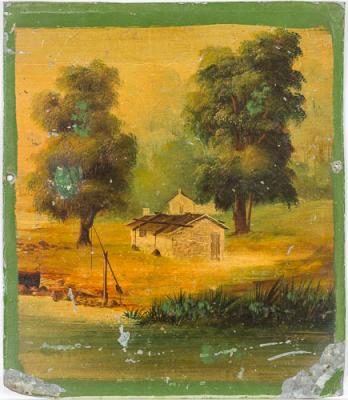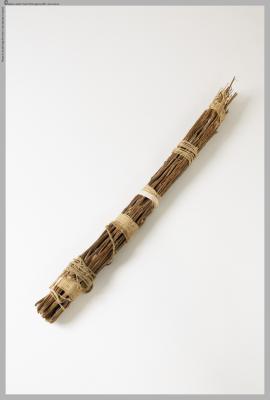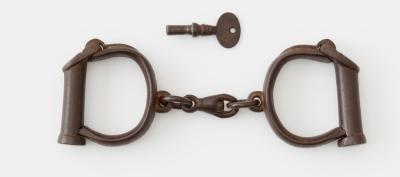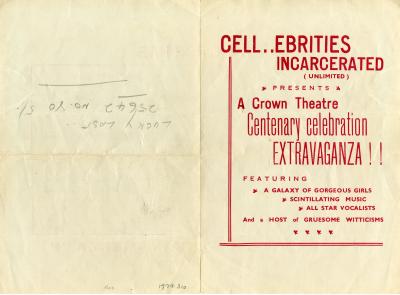LANDSCAPE PAINTING
Large, acrylic, landscape painting on Masonite board, depicting Australian bush scene against a sunset sky. The lower third of the painting depicts the foreground containing low scrubs painted in very dark colours with some small white highlights. Several tall, dark trees raise upwards towards the top of the painting. The middle distance of the painting has a white and grey flat horizon, containing some small trees with dark foliage and several upright dead trees with no foliage. The background of the upper two thirds of the painting is coloured in vivid yellow, orange and red. In the bottom righthand corner of the painting in a signature in white, 'Reggie MOOLARVIE'. The painting is on a single piece of 5mm Masonite. A loop of string for hanging is attached to holes located in the top right hand and left hand corners on the back of the board.
Provenanced to Fremantle Prison
Details
Details
Art education programs at Fremantle Prison served as an introduction to further education for most participating prisoners, both inside the prison system and upon release. From its origins in the 1950s, the provision of art classes within the Western Australian prison system continues through to today, providing inmates with a chance to creatively channel emotions and to find their own voice. In this way prison art is pivotal in that it provides inmates with the opportunity to construct an identity based around positive achievement.
In 1978 Steve Culley began teaching art classes at Fremantle Prison, soon accompanied by David Wroth and Lindsey Pow. The popularity of their art program can be gauged by the number of prisoners who enrolled; more than 2,000 students within the first five years. Initially these art classes were for Aboriginal prisoners only, but as their popularity grew the classes were opened up to other prisoners, and were moved into a larger space in the Assessment Centre. The Assessment Centre was considered secure enough that prisoners could come and go freely. When the Prison took back this space two years later, the art classes were moved into the Main Cell Block, behind the Catholic Chapel.
Born in Hall's Creek in 1947, Reggie Moolarvie worked as a stockman, though from his mid-twenties he found himself in and out of prison. Whilst at Fremantle Prison, Moolarvie worked with art teacher Steve Culley. The Fremantle Prison Collection contains several works by Moolarvie in the Carrolup style, as well as landscapes on the cell wall of cell C30 of 4 Division. Moolarvie also contributed to a mural in the 2 Division yard.
The distinctive Carrolup style of painting originated from a Native Settlement of the same name in the South West of Western Australia. It was re-established in 1940 as a farm training school for Aboriginal boys under the Aboriginal Protection Act. In 1945 the school’s headmaster Noel White, and his wife Lily, established educational programs in art and music for the pupils. The art produced by the children became famous in Australia and overseas, and many pupils went on to become established artists.
Mr White developed a rapport with the children at Carrolup and encouraged them to draw what they saw whilst on nature rambles. One student said, “The native children in the past wasn’t given a chance to learn, but since Mr White took over the teaching at Carrolup we are now getting people to respect us and our drawings”. Carrolup was closed down by the Department of Native Affairs in 1951, viewed by many as a victim of its own success. Unfortunately many former students of the school later found themselves behind bars in Fremantle Prison, and the Carrolup art style became a common theme in prisoner art.









